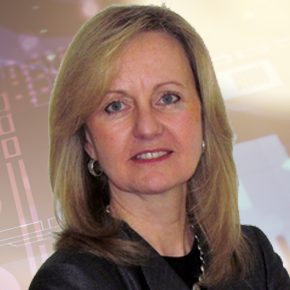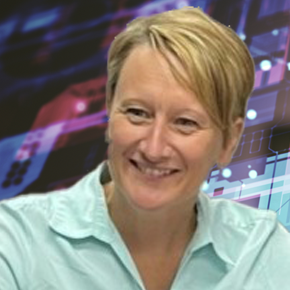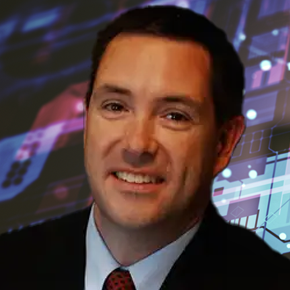June 1, 2023
How is Carbon Footprint Calculated, and Why Does It Matter?

Transcript
How is Carbon Footprint calculated?
The carbon footprint of a product is calculated by measuring the emissions produced by industrial processes, the electricity use of machines, and the scrap material used and wasted. The resulting carbon dioxide equivalents are added up to determine a product’s environmental impact, also known as co2e.
The carbon footprint of a company is among the top concerns of C-level stakeholders. So we’ve brought a CEO onto the podcast today to talk about how companies can get ahead of climate change by using technology to reduce their greenhouse gas emissions (ghg emissions), improve energy use, and get closer to net zero. Stephanie Feraday is the CEO of aPriori, and the sustainability software she sells is so much more than a carbon footprint calculator. In this interview, you’ll hear how executives today are looking for a complete solution to reduce carbon emissions, and how aPriori helps them reach their sustainability targets without slowing down the assembly line or sacrificing profit.
Stephanie Feraday, thank you for speaking with us today.
Stephanie Feraday: It’s a pleasure.
The Pressure to Measure Sustainability
Leah Archibald: Industrial companies have been talking about reducing greenhouse gas emissions for years now. But accurate carbon footprint calculators have been a long time coming. Why is there suddenly new pressure to measure co2 emissions?
Stephanie Feraday: If you look at what’s happened over the last couple of years – even in the last 12 months – there are many new challenges coming at us. Supply chain disruptions, increasing material prices, upcoming environmental protection agency (epa) regulations… all mean sustainability is really moving from the phase of intent – what people are thinking about doing – to action and impact. Companies need to make a real difference in reducing the carbon footprint of their design decisions.
Leah Archibald: And in the past, when we’ve talked about carbon calculators and buying carbon offsets, we’ve often be led to believe that profitability and sustainability move in two different directions. But as companies are moving further towards carbon neutral, they’re finding that’s not necessarily the case.
Stephanie Feraday: Yes, you’re absolutely right. That was the trend historically, because there wasn’t a methodology to have cost and co2e data coming together into a multi-factorial analysis. But now, with all your data in the same aPriori application, you can be getting the cost feedback and the manufacturability insights that help you ensure you’re bringing products to market quickly, while also hitting your targets for greenhouse gas emissions.
That’s what’s really changed. It’s the ability to have data on the amount of greenhouse gases, energy use, and indirect emissions at your fingertips all at one time. And not only all at one time, but for all the stakeholders in the product development cycle. So whether it’s design engineers during the design process, or sourcing professionals as they are deciding where to make it, or the manufacturing organizations behind the scenes, they can all act on the same data to reduce emissions without necessarily increasing cost.
Why Does It Matter? Capturing Individual Carbon Footprints of Industrial Products
Leah Archibald: The technology for carbon footprint calculation has just recently advanced to the level where you can calculate the individual carbon footprints of products. Why does it matter? Why are providers offering this capability now?
Stephanie Feraday: I think while companies have been responding to different kinds of issues over the past 10 years, the challenge today is that everything’s happening faster. Product life cycles are less than half of what they used to be. The time to get products to market is even faster. The life cycles that products are on the market are shorter. And companies are getting feedback from their customers even sooner through IoT. So they need the ability to be able to react, to respond to market conditions very quickly, and there’s no way you can do that without having digital information across the whole life cycle.
The methodology that makes this possible is what’s at the core of our technology. At the very heart of what we do is the ability to create digital manufacturing simulations of all different manufacturing processes. From those digital simulations, we are able to generate insights on profitability and sustainability. And aPriori does it fast – in a matter of a few seconds to a few minutes. So that’s the way to make carbon neutral a reality – to create a digital manufacturing thread that feeds insights to all of the stakeholders who need to make decisions on co2 emissions and cost.
Leah Archibald: Looking ahead, are you feeling optimistic about what’s facing manufacturers? Or are you feeling cautiously hopeful?
Stephanie Feraday: A little bit of both. I think what I’m feeling really optimistic about is that we’re moving out of this phase of tactical actions — carbon offsets —to much more strategic ghg protocol — thoughtful initiatives that are driving long-term change. We have the resilience now to not have future issues phase us. Our human activities can move us towards net zero, rather than away from it.
Leah Archibald: Stephanie Feraday, thank you so much for joining us today.
Stephanie Feraday: Really glad to be here.








